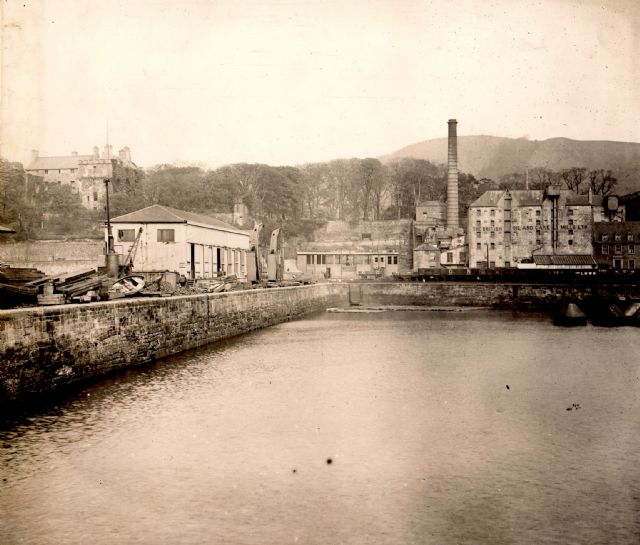Sugarhouse
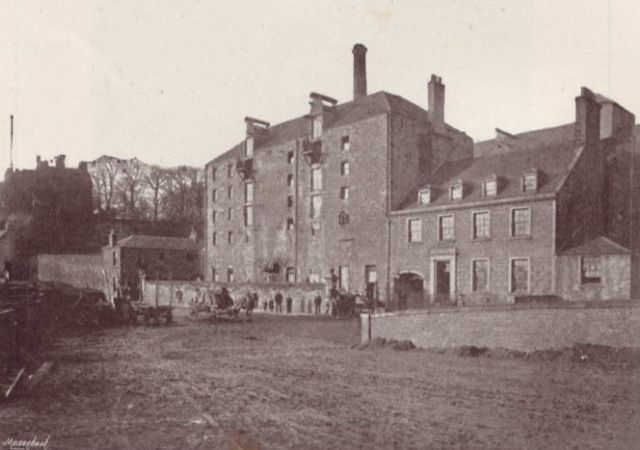
Oilcake Mill 1907
Oil Cake Mill
Messrs D. Russell & Co, who purchased the Sugar House in 1876[1] for £3,200 altered and added to the building. Photos from the early 20th century show the addition of a tall chimney. The ground floor (the press room) covered around 100 ft x 36 feet, equipped with the best modern machinery and storage for “upwards of 20,000qrs of seed with large accommodation for oil and cake and empty casks…their oil is recognised as taking a position in the front rank, almost their whole make being used in the manufacture of margarine or butterine.”
For a comprehensive history of the site see Gill Patersons article below.
Oilcake Mill
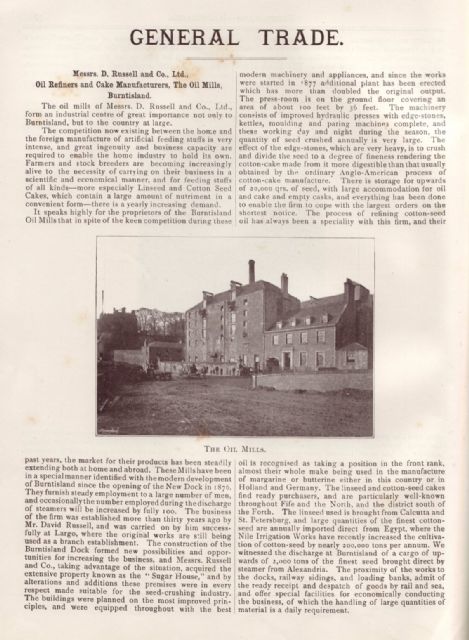
Trade article from early 1900s
Oilcake Mill
Sugar House
The sugar house was built opposite the harbour between 1765 and 1767. Sugar was refined there until the mid-1790s, although the buildings were still standing until 1972, having found a new use in the late 19th century as an oil and cake mill.
Sugar houses were built in England from 1612, becoming prevalent in Scotland from 1667, initially in Glasgow. Inextricably linked to the slave trade, it was for some time a very profitable enterprise. The east coast sugar houses in Leith and Dundee were in production later, from the 1750s[1]. Raw unrefined sugar was imported from the Caribbean, mostly from the islands of the West Indies. The sugar cane took 18 months to grow, requiring frequent attention by field slaves. The tall canes were then cut and carried to sugar mills where they were fed between rollers to squeeze out the sweet juice. The resulting juice was boiled in large coppers until it crystallised into raw sugar. The raw crystallised sugar was packed into hogsheads (large barrels) to be shipped over the Atlantic to sugar houses in towns or cities such as London, Bristol, Glasgow, Edinburgh – and here in Burntisland. The sugar was further boiled, and filtered to remove impurities, then pressed into moulds, also yielding molasses which was mostly used in distilling rum. The refined crystallised sugar was sold in large cones or loaves from which the sugar was chipped off with “sugar nips” or tongs, or to be made into confectionery or cakes. Later the sugar was sold as lumps or the bagged granulated form we are familiar with today.
Some pictures of the buildings
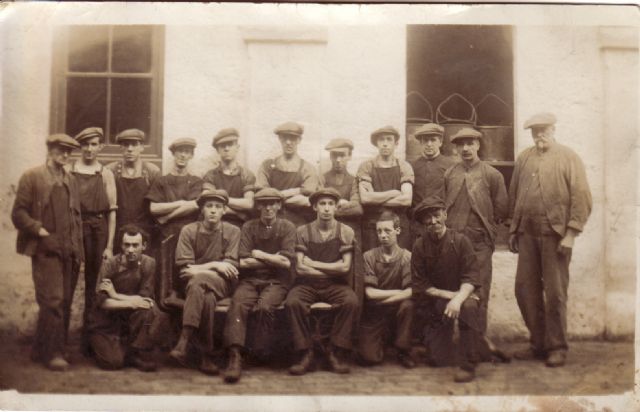
oilcake workers
oilcake workers early 1900s
building 1907
Oilcake Mill in 1907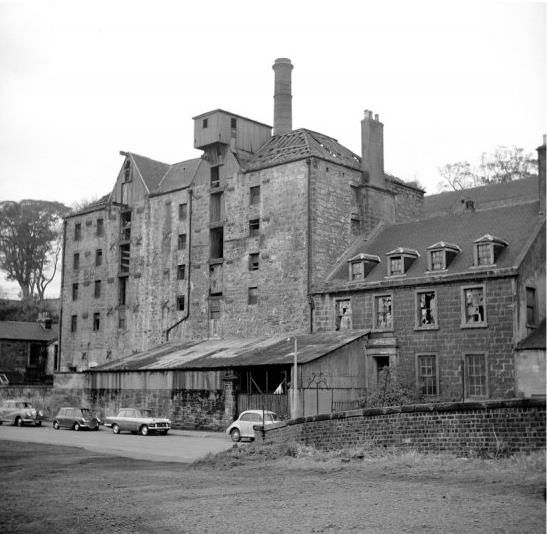
Sugarhouse before demolition in 1970s
The building before demolition in the late 1970s.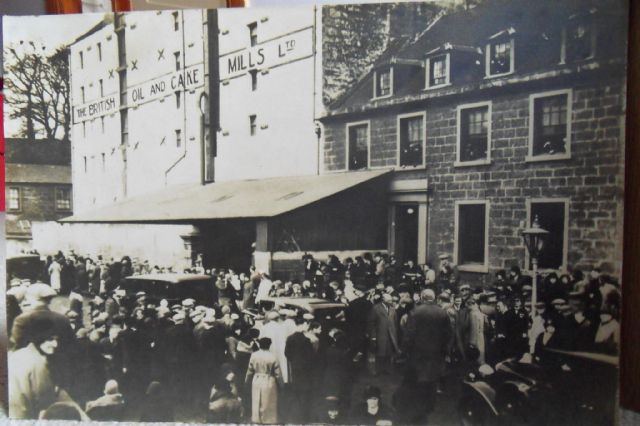
visit of Prince of Wales 1933
Visit of Prince of Wales, later Edward VIII, 1933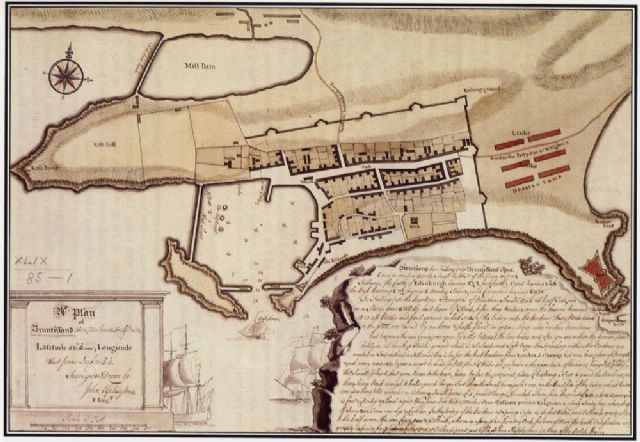
map of harbour area mid 1700s
map of harbour area mid 1700s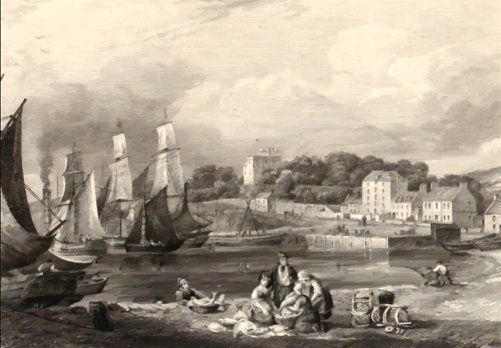
Harbour circa 1820
Harbour circa 1820 showing Sugar House in distance.